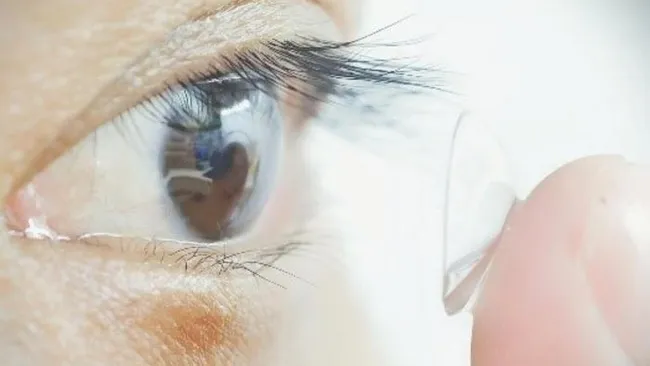Scientists have developed a revolutionary contact lens that allows wearers to see in complete darkness—even with their eyes closed. The lens works by combining advanced thermal imaging technology with lightweight, flexible electronics, making it a major leap forward in wearable vision enhancement.
The device, still in its prototype phase, integrates a special material known as van der Waals semiconductor. This ultrathin substance is capable of detecting infrared radiation, which is essentially heat emitted by people, animals, and objects. The data collected is then converted into a visual image by the device, giving users the ability to perceive surroundings in the dark.
This innovation is the result of a collaboration between researchers at the University of Pennsylvania and the U.S. Army Research Laboratory. They engineered the lens to be exceptionally compact and lightweight, allowing it to be worn directly on the eye like a traditional contact lens. According to the researchers, the main breakthrough lies in miniaturizing the thermal sensors and the associated imaging circuitry into a contact-lens-sized form without compromising function.
The lenses feature a built-in array of microscale photodetectors. These sensors are capable of capturing thermal infrared wavelengths and feeding the signal into a processing unit. Remarkably, the lens does not need to rely on external batteries or bulky equipment. Instead, it uses wireless power transfer, likely through near-field communication (NFC) systems similar to those found in smartphones and contactless payment cards.
In practical terms, this technology opens new possibilities for military personnel, emergency responders, and even civilians in low-visibility environments. A soldier could navigate a dark battlefield, a firefighter could see through smoke, and a hiker could explore at night—all without goggles or bulky gear.
Perhaps even more surprising is the lens’s ability to provide vision even when the user’s eyes are closed. Since the lens detects heat rather than light, it can relay information regardless of whether the eye is exposed. This feature could allow wearers to maintain awareness of their surroundings while resting or in situations requiring eye protection.
Dr. Matthew H. Kroll, a materials scientist involved in the research, noted that the design solves long-standing challenges in combining flexibility, power efficiency, and thermal imaging within an ultra-compact device. “We had to overcome several technical hurdles, especially in integrating the sensor array with transparent, flexible materials that are safe for the eye,” he said.
Despite the promising results, the lens is still in the early stages of development. Researchers have conducted initial lab tests but have yet to announce a timeline for human trials or commercial availability. Safety, comfort, and long-term biocompatibility are among the issues that must be addressed before the technology can move from prototype to product.
Still, experts are optimistic about the future of this technology. The fusion of bioengineering, materials science, and photonics could soon make superhuman vision a reality. As Kroll stated, “This is not science fiction. We are getting closer to equipping humans with sensory abilities once reserved for animals like snakes or advanced machines.”
The team plans to continue refining the lens, focusing on increasing image resolution, reducing power consumption, and expanding its functionality to potentially include augmented reality overlays or health monitoring features.
If successful, these contact lenses may mark a turning point in how humans perceive and interact with the world—day or night, eyes open or closed.
Source; Live Science



